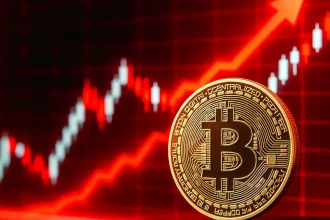The cryptocurrency landscape continues to evolve rapidly, with significant developments shaping market dynamics. This update delves into recent price movements, regulatory actions, and notable events influencing the digital asset space.
Market Performance and Price Movements
As of November 23, 2025, Bitcoin (BTC) is trading at $85,721, reflecting a 1.4% increase from the previous close. The intraday high reached $86,692, while the low touched $83,511. Ethereum (ETH) stands at $2,792, marking a 1.3% uptick. Other major cryptocurrencies, including Binance Coin (BNB), XRP, and Cardano (ADA), have also experienced modest gains, indicating a cautiously optimistic market sentiment.
Notably, altcoins such as Hedera (HBAR) and Stellar (XLM) have emerged as top performers, registering substantial gains of 25% and 55%, respectively, over the past 24 hours. This surge underscores the growing investor interest in alternative digital assets beyond the dominant players.
Regulatory Developments and Government Actions
In a significant policy shift, President Donald Trump has actively embraced cryptocurrency initiatives. Earlier this year, he established a Strategic Bitcoin Reserve, positioning Bitcoin as a national reserve asset. This move aims to bolster the United States’ leadership in digital financial technology and has been met with both praise and criticism. Supporters view it as a visionary step towards integrating digital assets into the national economy, while detractors raise concerns about potential conflicts of interest and regulatory challenges.
Furthering his pro-crypto stance, President Trump pardoned Changpeng Zhao, the founder of Binance, who had previously faced legal challenges related to money laundering allegations. This pardon has sparked debates about the administration’s approach to cryptocurrency regulation and its implications for the broader industry.
International Incidents and Security Concerns
The global cryptocurrency ecosystem has also faced challenges. In February 2025, the Dubai-based exchange Bybit suffered a significant security breach, resulting in the theft of approximately 400,000 Ethereum, valued at around $1.5 billion at the time. Investigations have linked this unprecedented hack to the Lazarus Group, a notorious hacking organization believed to be backed by North Korea. This incident has heightened concerns about the security vulnerabilities inherent in digital asset platforms and the need for robust protective measures.
Additionally, the Czech Republic grappled with a political scandal involving a substantial Bitcoin donation to the Ministry of Justice. The donation, valued at approximately $45 million, was traced back to Tomáš Jiřikovský, a convicted criminal. The ensuing controversy led to the resignation of Justice Minister Pavel Blažek and intensified scrutiny over the government’s handling of digital assets and potential money laundering activities.
Exchange Innovations and Market Expansion
On a positive note, the Singapore Exchange (SGX) announced plans to launch perpetual futures trading for Bitcoin and Ethereum, set to commence on November 24. This initiative is tailored for accredited and institutional investors, offering them new avenues for engaging with digital assets. The introduction of such financial instruments reflects the growing institutional interest in cryptocurrencies and the maturation of the market infrastructure.
In Argentina, President Javier Milei’s promotion of the $LIBRA cryptocurrency project led to a dramatic price surge followed by a steep decline, resulting in significant investor losses. This incident has been dubbed “Cryptogate” and has sparked widespread criticism and calls for regulatory oversight to protect investors from similar schemes in the future.
Conclusion
The cryptocurrency market remains a dynamic and multifaceted arena, influenced by a complex interplay of regulatory decisions, technological advancements, and geopolitical events. While the sector offers substantial opportunities for innovation and investment, it also presents challenges that necessitate vigilant oversight and informed participation. As the landscape continues to evolve, stakeholders must navigate these developments with a balanced perspective, recognizing both the potential rewards and inherent risks associated with digital assets.





